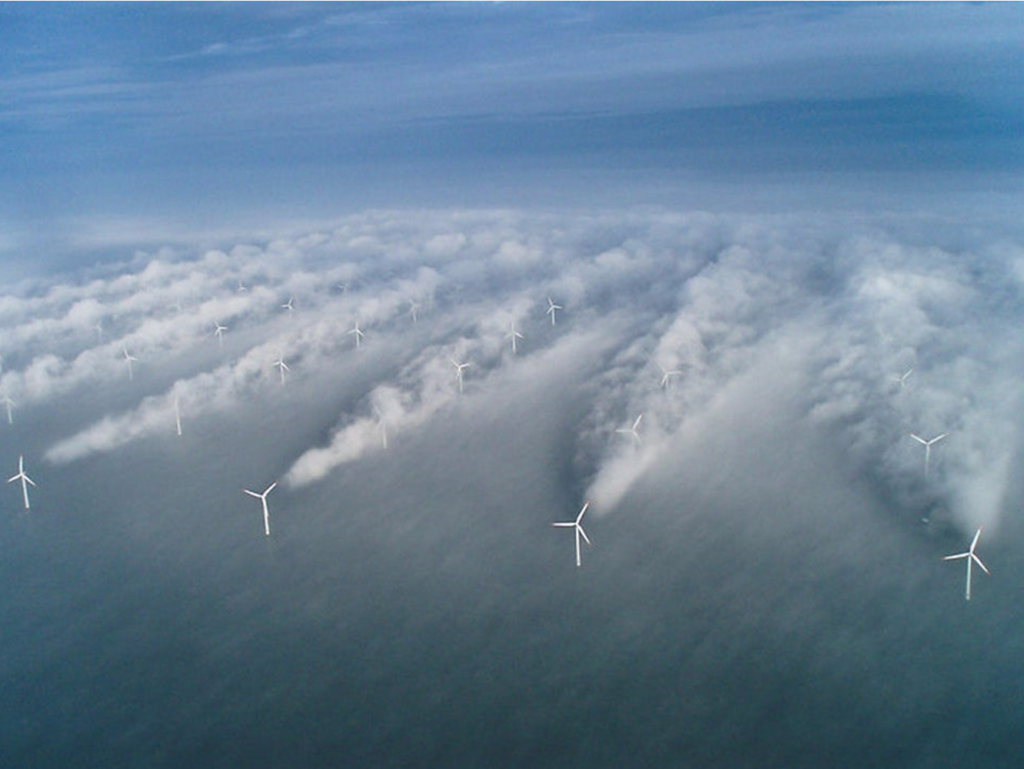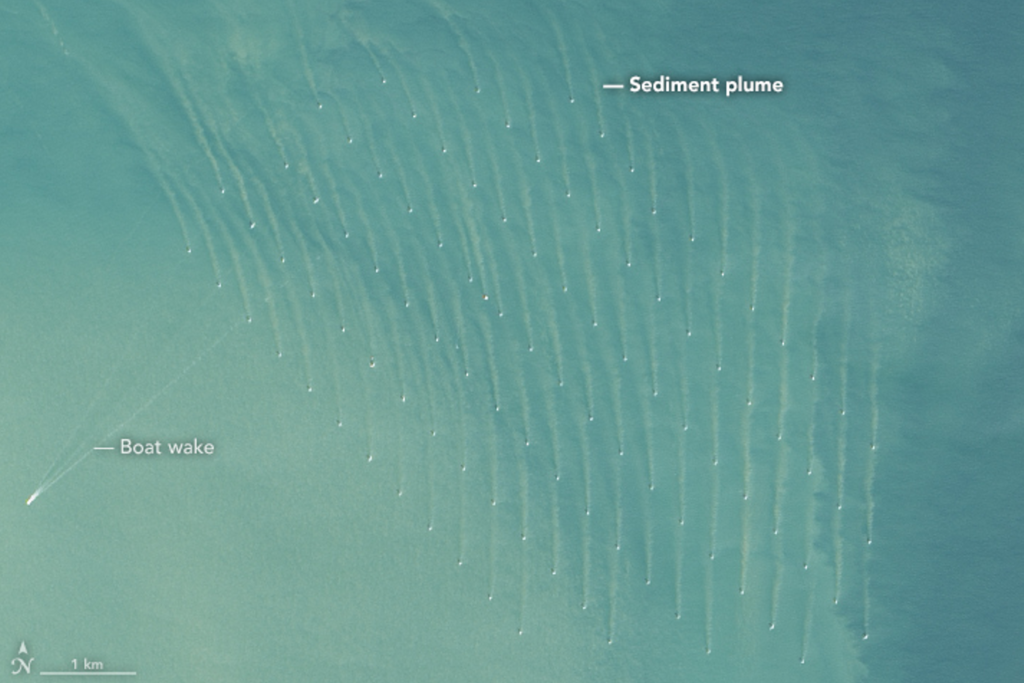
Windfarm wakes Credit: Vettenfal
Our last newsletter brought up an aspect of West Coast offshore wind that I (and others) find a bit alarming – the likelihood that pulling huge amounts of energy out of meteorological and marine hydrodynamic systems will have impacts on those systems.
I am not a physical oceanographer, but I have a reasonable grasp on physics; and one of the fundamental tenets of the field proposed by Julius von Meyer is that energy can be converted, but it cannot be destroyed or created. So while there is entropy in any energy conversion, the net energy in the universe remains constant.
Reduced to a simple idea in our inquiry; when we pull 10 giga-Watts of energy out of onshore wind and convert it to electricity, the wind doesn’t then just go on it’s merry way to do the same work it has been doing since the beginning of oceanographic time.
Some of the work it has been doing on the Pacific Coast is contained in the interaction between wind and sea that induces an upwelling on the west coast of our continent. This upwelling has served as a conveyor belt for deep-water nutrients – all of the offshore surface and water-column biological materials, from dead phytoplankton to whale feces that continues to fall offshore, feeding a rich mélange of comestible ocean life.
It is this nutrient transport system which has created one of the most diverse and fecund biological systems on the planet, invoking the sobriquet “The Serengeti of the Pacific.”
So herein lies our concern; if we are pulling all of this energy out of the offshore-wind/nutrient-upwelling system, what will the impacts be, and what might be the consequences?
There are a lot of variables at play here, and why there are such quantitative differences between the few models being advanced.
The effects include surface warming (which will have meteorological consequences on adjacent terrestrial weather conditions), reduction in surface “sheer forcing,” (which, according to the North Sea study, is more pronounced in deeper waters), and large-scale current interactions with the turbine structures. The North Sea studies are in shallow waters – and we might anticipate similar impacts on East Coast shallow-water windfarms. But the West Coast developments will be in much deeper waters, with many more complicated variables, and unknown consequences.
This is why the Miller and Kleidon (2016) paper on optimizing turbine wind-harvest efficiency caught my attention – because they found that terrestrial turbines can slow wind speeds down by 42%-50% (!) But even if the offshore wind speeds are not so dramatically effected, the proposition in the Ocean Protection Council study that offshore wind farms might decrease upwelling by 10%-15% should have us sitting up and talking notice.
Current system disruptions are discussed in a Nature Journal paper “Future changes in coastal upwelling ecosystems with global warming: The case of the California Current System” wherein they suggest (among other things) that higher thermal variability between land and water temperatures may increase upwelling – or maybe not; although in terms of energy exchanges, the possibility that the thermal driver would counterbalance the wind shear driver is doubtful.
I suspect we will be seeing a lot more papers on the interactions between turbines and marine habitats. I hope that these studies will inform our long-term energy-use strategies.

Photo: NASA Earth Observatory



I interpret this as something that needs more study.